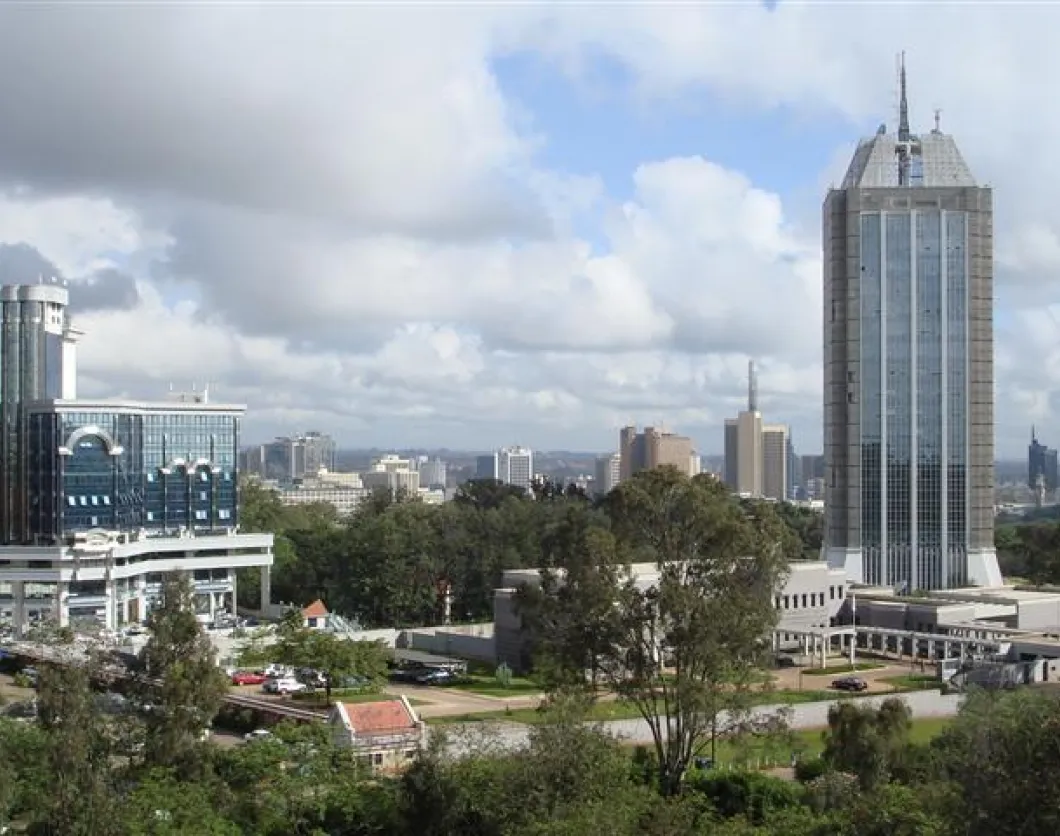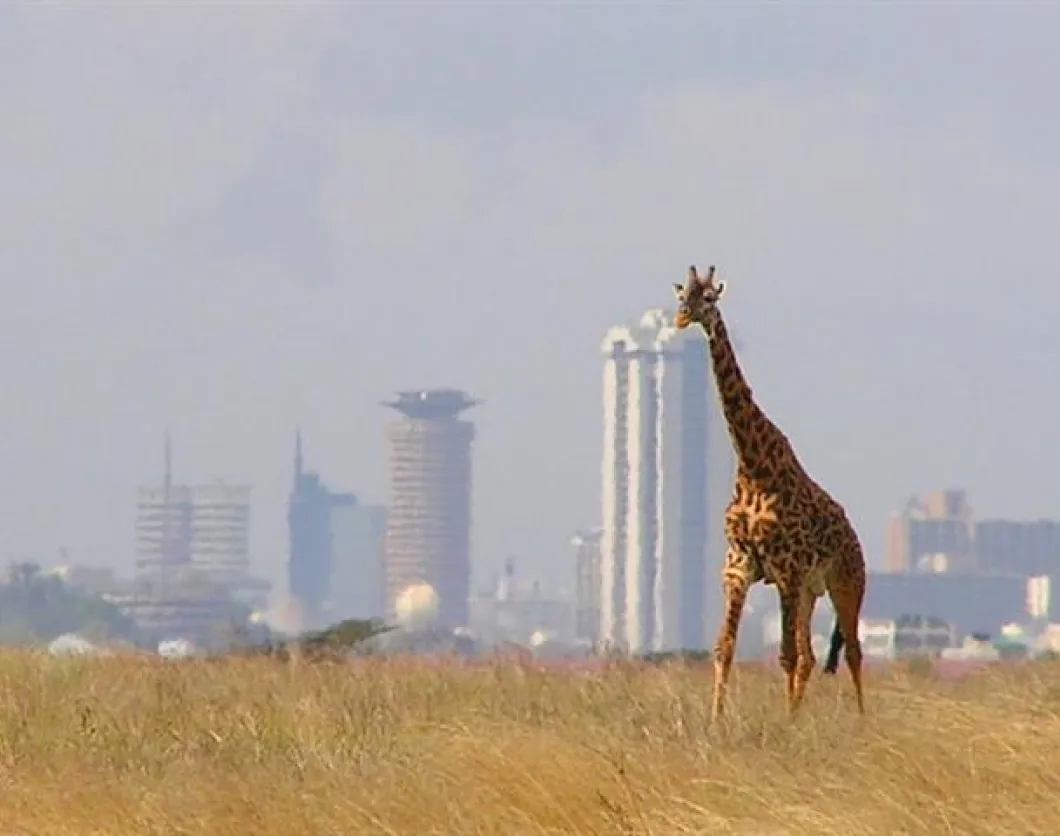Kenya’s capital city has risen in a single century from a brackish uninhabited swampland to a thriving modern capital. When railway construction workers reached this area in 1899, they set up a basic camp and supply depot, simply called ‘Mile 327’. The local Maasai called this highland swamp Ewaso Nai’beri – the place of cold water.
The camp became a rustic village, and then a shanty town, which by 1907 was the capital of all of British East Africa. It was soon an important centre for the colony and a mecca for adventurers, hunters and travellers from all over the world.
Modern Nairobi is still the safari capital of Africa, but the modern world has quickly caught up with the city. A frontier town no more, Nairobi has become one of Africa’s largest, and most interesting cities. Nairobi is a city that never seems to sleep. The entire town has boundless energy and is a thriving place where all of human life can be found. This is a place of great contrasts where race, tribe and origin all become facets of a unique Nairobi character.
The city has not lost its sense of the past, with an excellent museum and the historical home of Karen Blixen, author of Out of Africa open to visitors. This is not a modern capital separated from the great wilderness that surrounds it. Just outside the city is Nairobi National Park, 113 sq kms of plains, cliffs and forest. The park is home to large herds of Zebra, Wildebeest, Buffalo, Giraffe and more. Rhino, Cheetah, and a large number of Lions are all found here, living wild within 20 minutes of the centre of town.
Further out of town, the spectacular 27 metre deep 'Fourteen Falls' waterfalls at Thika are perfect for a scenic day trip. Nearby Ol Donyo Sabuk National Park, is centred on an imposing 2,146 metre mountain. For the adventurous, take an hour's drive from town and you will find white water rafting on the beautiful Tana River.
From the wildlife to the nightlife, Nairobi is a city unlike any other. With a fantastic music scene, excellent international restaurants and an endless and colorful array of shops and markets, there is plenty on offer for the visitor.
Nairobi is Kenya’s capital and the arrival point for many visitors. The main airport is Jomo Kenyatta International, located 15kms out of the centre of town. JKIA handles both International and domestic carriers.
Wilson airport, located 11 kms outside of the city centre, is the domestic hub for both scheduled and chartered domestic air traffic. There are countless Matatu stands throughout Nairobi, with continuous arrivals and departures throughout the day. Nairobi is the centre of Kenya's extensive bus network, with many bus companies operating to and from destinations throughout the country.
Walking around Nairobi is relatively straightforward, as the city centre is small and accessible. In some areas, there can be a security risk while walking, and it is best to seek local advice before setting out. Taxis are widely available, and convenient. They are often parked in the street around hotels and tourist areas of the city. Hotels and restaurants can order taxis if necessary. Nairobi cabs are usually marked with a yellow line along each side. They are not metered, and a price should be agreed with the driver before departure. Ask for local advice or at your hotel for correct rates.
Buses operate on set routes throughout the city. The large Kenya Buses run on routes throughout the city on regular schedules. Buses can be boarded at any stop and tickets purchased on board. Matatus (Public Minibuses) also operate on city routes throughout the day, and are the most popular form of local public transport.
Culture & Sports Are Powerful Drivers of Tourism
Kenya’s diverse cultures, comprising 42 ethnic backgrounds, as well as the importance of sport in the country, being amongst the best in the world of athletics, gained prominence as tourism drivers; supported by the Kenya Tourism Board and the recently launched partnership between the Kenya Wildlife Service and the Athletics body in the country. The international limelight enjoyed by athletics is now being used as the best tool for promoting Kenya’s wildlife abroad.
Film-Making a Marketing Tool for Kenyan Tourism
The Kenya Tourism Board is waking up to the unique potential held by the diverse scenery found all over the country to attract both film-makers and advertising and PR productions. When Uganda hosted the crew of the film “The King of Scotland”, the attractiveness of the country to film lovers led to a great boost to tourism, with many tourists claiming that they decided to visit Uganda for the first time after watching the movie. Kenya’s “Walk with the Lions”, adapted from the famous “Born Free” film and series, was the beginning of a partnership between the film industry and the Kenyan tourism industry, which has every chance of continuing and prospering.










